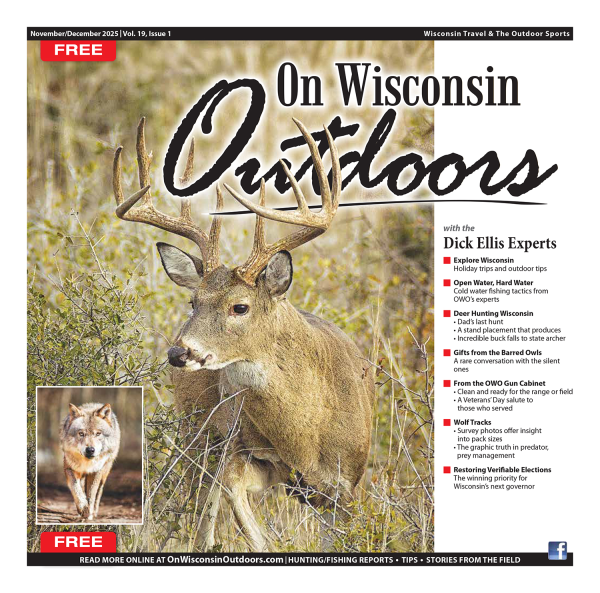DNR Asks Public To Report Black Bear Den Locations
MADISON, Wis. – The Wisconsin Department of Natural Resources (DNR) encourages the public to report any black bear den locations they find across Wisconsin in order to help with an ongoing study on black bear reproduction.
The Black Bear Litter and Diet Survey will begin its second year of data collection this upcoming winter. The study will generate new estimates of black bear reproductive rates within each bear management zone, and these estimates will improve the accuracy of the population models used in each zone. Additionally, researchers are investigating a connection between consumption of human food sources and bear reproduction since diet can affect cub survival rates and litter sizes.
“Public reporting is essential to this project. You don’t find bear dens every day, so it is important that people report them to us when they find them,” said Dr. Jennifer Price Tack, DNR Large Carnivore and Elk Research Scientist. “Reporting dens helps us meet the sample size requirements for our study and increases the accuracy of the black bear population model.”
Price Tack describes the importance of this project and public reporting in this short video.
The public is encouraged to report as much information about known black bear dens as possible without approaching or disturbing the dens. Den locations from prior years can be useful since black bears will occasionally re-use dens.
A SAFE, SUCCESSFUL FIRST SEASON
Surveying efforts began earlier this year, and the bear research team was busy surveying dens all season. They worked with landowners to visit the den before deciding to survey, determining if the den is safe, accessible and in use. They surveyed as far south as Jackson County and as far north as Iron County.
Staff successfully GPS-collared 13 female black bears (called sows). Collars help staff learn more about bear foraging behavior and locate the sows in the following years. Revisiting the sows will help staff determine the reproductive success of each sow, such as her litter frequency, litter size and the survival rates of the cubs. Data on sow weight, body measurements and age were also collected.
While surveying, bear health and safety are a top priority. Designated staff monitor the sow’s breathing and heart rate while the rest of the team quickly gather the needed samples and measurements. Any cubs present at the den are carefully weighed and sexed. Cubs are tucked into staff’s coats to keep them warm because the cubs cannot yet regulate their own body temperature. Once researchers are finished, the sow and cubs are tucked back into their den.
“We completed all surveys without any safety issues. That’s huge. We put a lot of work into minimizing the risks to people and bears, and we will continue to make that a priority in coming years,” said Price Tack.
LOOKING AHEAD
The Black Bear Litter and Diet Survey team will continue to survey dens for the next seven to eight years. Over that time, the team hopes to get 100 collars out across each of the bear management zones, with approximately 20 collars per zone. So far, the team is on track for the needed sample size, but they’ll need new reports each year to meet their benchmark.
The public can report known black bear dens to the DNR by clicking this link.









